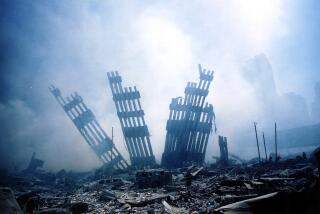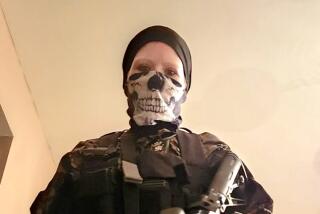Treasure Hunters Need Reliable Maps
SOUTH POMFRET, Vt. — Every day, according to a recent National Security Agency briefing, the United States and its eavesdropping partners intercept more that 650 million “events”: radar signals, radio and data transmissions, satellite, cell and land-line phone calls, faxes and e-mail and text messages.
The signals, in dozens of languages -- and sometimes encrypted with sophisticated codes -- flow into a dozen or so centers around the world where the majority are processed automatically by computers. Some of the information ultimately finds its way into the 10,000 thematic and geographic “product reports” that are sent each day to analysts at the NSA, CIA and military intelligence agencies and commands.
Add to this flood of information hundreds of thousands of reconnaissance photos, human agent and law enforcement reports, prisoner debriefings and document translations -- not to mention a cascade of “open source” newspapers and broadcasts -- and you begin to understand the intelligence failures of Iraq and Sept. 11.
Part of the problem is that the world is undergoing an information revolution, and we haven’t yet learned how to cope with the sheer volume of information out there. Only a tiny fraction of the daily intercepts are actually ever reviewed by humans, and much of what is collected gets lost in the deluge of data -- unless someone on a mission makes a special effort to figure out what it means.
That special effort is called intelligence analysis. Once these “events” are recorded and reported, someone has to figure out what they mean, and the mind-set of the person doing the interpreting can and does color the results. Sometimes, as may have been the case with Sept. 11, analysts fail to see conspiracies because they’re not looking hard enough for them. At other times, as was probably the case with Iraq, they see things that aren’t there because they expect them to be there.
So how can we know what’s real? Since Sept. 11, 2001, the administration has convinced itself, based on intelligence analysis, of the existence of a vast, global terrorist network. Government officials linked former Iraqi dictator Saddam Hussein and numerous countries and terrorist organizations to Al Qaeda in this conspiracy. The same kind of speculative efforts have folded all sorts of activism -- Islamic (or anti-American) movements, independent terrorism and plain old criminal activity -- into a vast, worldwide threat.
Here’s an example of how the links are established. Soon after 9/11, Defense Secretary Donald H. Rumsfeld commissioned a “B Team,” which, according to a still-classified Pentagon document, was supposed to “challenge the conventional wisdom that no global connections exist between terrorist groups.” The “Wurmser-Maloof” project, as it was called, was led by two neoconservative civilians, David Wurmser and F. Michael Maloof. The team went back through intelligence debriefings and intercepts and made an elaborate flow chart, known as “the matrix” that showed links between a number of countries and various terrorist groups. The project concluded that Hamas, Hezbollah, Islamic Jihad and other groups with disparate ideologies and objectives were increasingly putting aside their differences and uniting behind a shared desire to harm the U.S.
Were their conclusions accurate? The CIA and Defense Intelligence Agency were certainly skeptical of the approach. But Defense Policy Board member Richard N. Perle, who was briefed on the Wurmser-Maloof report, dismissed the agencies’ concerns, saying that intelligence analysts had failed to look for the kinds of connections uncovered in the report “because it wasn’t consistent with their theory” that the groups operated more or less autonomously. “They had filtered out the whole set of possibilities,” Perle said in an interview with the PBS show “Frontline,” calling the incompetence of CIA analysts “appalling.”
“If you’re walking down the street, [and] you’re not looking for hidden treasure, you won’t find it,” Perle said.
The Wurmser-Maloof group certainly found treasure. The “evidence” it turned up, when considered with this or that bit of rumor, established links between Hussein and Al Qaeda. The group also connected disparate bits of intelligence to justify additional fronts in the war by suggesting Al Qaeda’s presence in such places as Latin America.
At a time when intelligence agencies were still reeling from their failure to learn in advance of the Sept. 11 conspiracy, the highly motivated Wurmser-Maloof team employed a six-degrees-of-separation approach, which enabled the group to find Al Qaeda at every turn. The new “discoveries” and others like them formed the underpinning for the Bush administration’s global war on terrorism.
But drawing such ideologically charged conclusions from raw intelligence can be dangerous. Daniel Benjamin, a scholar at Washington’s Center for Strategic and International Studies and a former National Security Council terrorism official, notes that our misinterpretation of intelligence on Iraq has “handed our enemies a public relations victory.” Al Qaeda’s line, Benjamin says, is that the United States is intent on destroying Islam and occupying the Middle East. So when the U.S. says it is fighting a war because its intelligence has confirmed weapons of mass destruction in Iraq and no such weapons are found, Al Qaeda’s view seems more plausible. “We are accelerating the radicalism of the Muslim world,” Benjamin says.
Another consequence of the weapons-that-weren’t-there fiasco is that we are beginning to sound like the boy who cried wolf. Late last month, J. Cofer Black, the State Department’s top counter-terrorism official, spoke at the Organization of American States’ Inter-American Committee Against Terrorism in Uruguay about possible threats in the region. Black told his Latin American colleagues that the terrorist groups Hamas, based in the West Bank and Gaza Strip, and Lebanon-based Hezbollah had come to the “tri-border” area of Argentina, Brazil and Paraguay to raise funds and spread propaganda. “Although we do not have confirmed, credible information of an Al Qaeda presence in Latin America,” Black said, the Western Hemisphere’s “lightly defended soft targets” in tourism, aviation and shipping are all potentially vulnerable because Al Qaeda and its allies are “always seeking to extend their tentacles.”
Black calls for more law enforcement, intelligence and financial cooperation lest terrorist groups make increasing use of existing networks supporting the drug trade and “arms trafficking, money laundering, contraband smuggling and currency fraud.” But will Latin America take his call to arms seriously in light of other U.S. intelligence failures? More important still, will the U.S. come to be viewed as a nation using the events of Sept. 11 to eliminate its critics and extend its empire around the globe?
President Bush’s new intelligence commission will probably not delve into the dangers inherent in our new tendency to discover grave terrorist threats lurking around every corner. The commission’s mandate, according to a senior administration official, will be to evaluate and make recommendations with regard to collecting and analyzing intelligence against closed societies such as North Korea and Iran, especially in those societies that practice active deception, and to focus narrowly on the Iraq intelligence failure and other challenges relating solely to the proliferation of WMD.
We’re left with a conundrum. On Iraq, intelligence analysts blew it because they looked too hard for hidden treasure in the form of Iraqi weapons of mass destruction. As a result, we fought an unnecessary preemptive war that could easily increase the long-term dangers for the United States. But on Sept. 11, the same analysts are accused of incompetence for not looking for hidden treasure on the question of links among terrorist organizations. Perhaps the newly formed commissions should focus on a basic question: How can we refocus our intelligence analysts to, without ideological filters, find buried treasure while ignoring fool’s gold?
More to Read
Sign up for Essential California
The most important California stories and recommendations in your inbox every morning.
You may occasionally receive promotional content from the Los Angeles Times.










